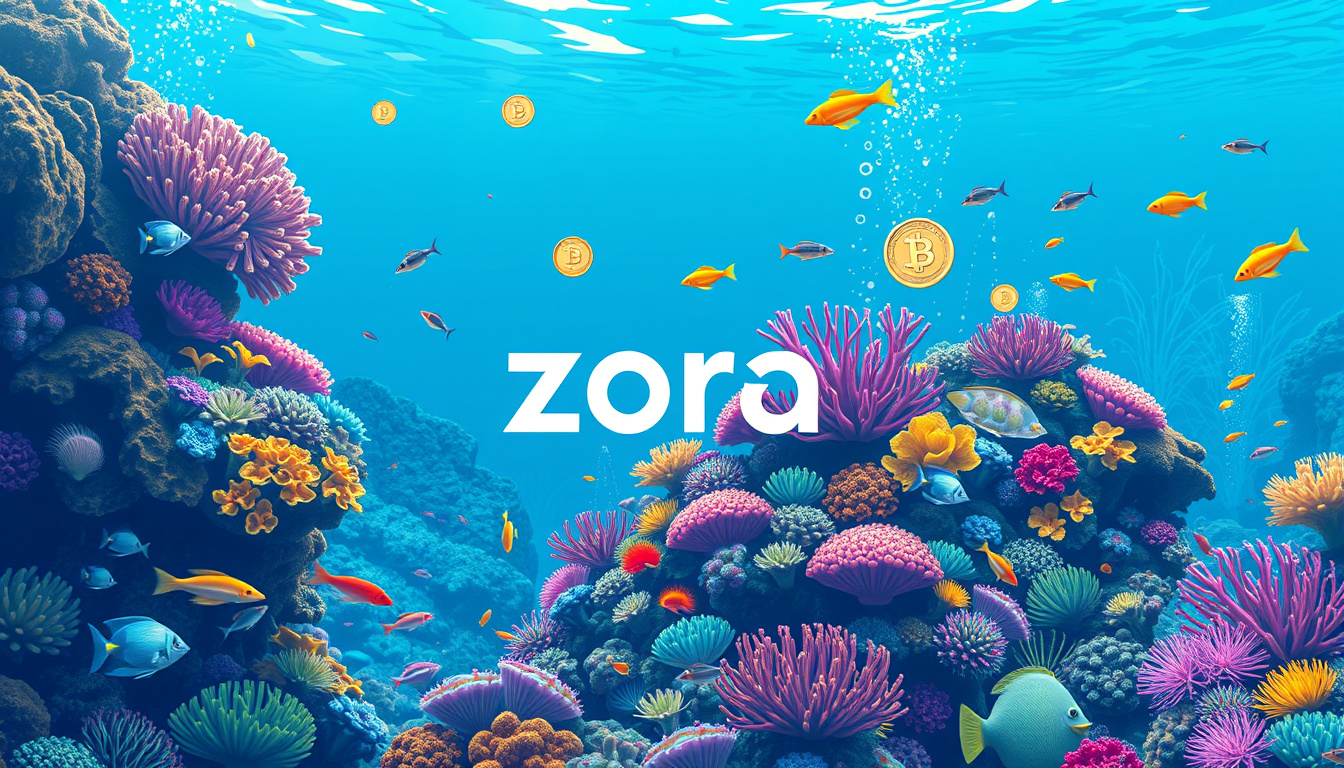The digital art landscape is undergoing a transformative evolution, driven by innovative blockchain projects that empower creators in unprecedented ways. One such ecosystem capturing attention is Zora, a platform that intertwines cryptocurrency and creativity through the concept of creator coins. This article delves into the mechanics of the Zora ecosystem, exploring how creator coins operate and their profound implications for digital artists.
Understanding the Zora Ecosystem
At its core, Zora is a decentralized marketplace and protocol that enables artists and creators to mint, sell, and manage digital assets. Unlike traditional platforms, Zora integrates a dynamic pricing mechanism, allowing prices to fluctuate based on market demand rather than being fixed. This system leverages liquidity and token economics to ensure a fair and transparent environment where creators maintain control over their work.
Creator Coins: The Heart of Zora’s Innovation
Central to Zora’s model is the concept of creator coins—unique tokens associated with individual artists. These coins represent a new form of value creation and community engagement. When an artist issues a creator coin, they effectively launch a personalized economy around their art and brand. Collectors and fans can purchase these coins, thereby investing directly into the artist’s future potential.
This approach grants digital artists several benefits:
- Financial Empowerment: Creator coins provide artists with an alternative revenue stream beyond traditional sales. As demand for the coins increases, their value ascends, rewarding early supporters and contributing to the artist’s income.
- Community Building: By holding an artist’s creator coins, fans become stakeholders in the artist’s journey, fostering a deeper connection and encouraging long-term engagement.
- Enhanced Marketing Dynamics: The fluctuating price of creator coins creates organic market signals, allowing both artists and collectors to gauge popularity and demand in real-time.
Impact on Digital Art and the Broader Creative Industry
The integration of creator coins within the Zora ecosystem signifies a shift toward decentralized artist economies. This innovation challenges conventional gatekeepers in the art world by providing artists with direct access to markets and supporters without intermediaries.
Furthermore, the transparent, blockchain-based transactions ensure provenance and authenticity, addressing long-standing issues of forgery and copyright infringement. The dynamic pricing model also incentivizes both creators and collectors to participate actively, cultivating a vibrant and sustainable creative economy.
Challenges and Future Outlook
While promising, the adoption of creator coins and the Zora platform is not without challenges. Market volatility, accessibility for new users unfamiliar with blockchain, and ensuring equitable distribution of value are critical considerations. Nevertheless, ongoing development within Zora and broader ecosystem integrations suggest a compelling future where digital artists harness the power of decentralized finance to redefine their craft and livelihoods.
Conclusion
Zora’s ecosystem and the innovative use of creator coins represent a significant milestone in the evolution of digital art. By merging blockchain technology with creative expression, Zora offers a pioneering framework that empowers artists financially and socially. As the platform matures, it is poised to reshape how digital art is produced, distributed, and valued, heralding a new era of artist-driven economies.
By Wolfy Wealth - Empowering crypto investors since 2016
Subscribe to Wolfy Wealth PRO
Disclosure: Authors may be crypto investors mentioned in this newsletter. Wolfy Wealth Crypto newsletter, does not represent an offer to trade securities or other financial instruments. Our analyses, information and investment strategies are for informational purposes only, in order to spread knowledge about the crypto market. Any investments in variable income may cause partial or total loss of the capital used. Therefore, the recipient of this newsletter should always develop their own analyses and investment strategies. In addition, any investment decisions should be based on the investor's risk profile.

